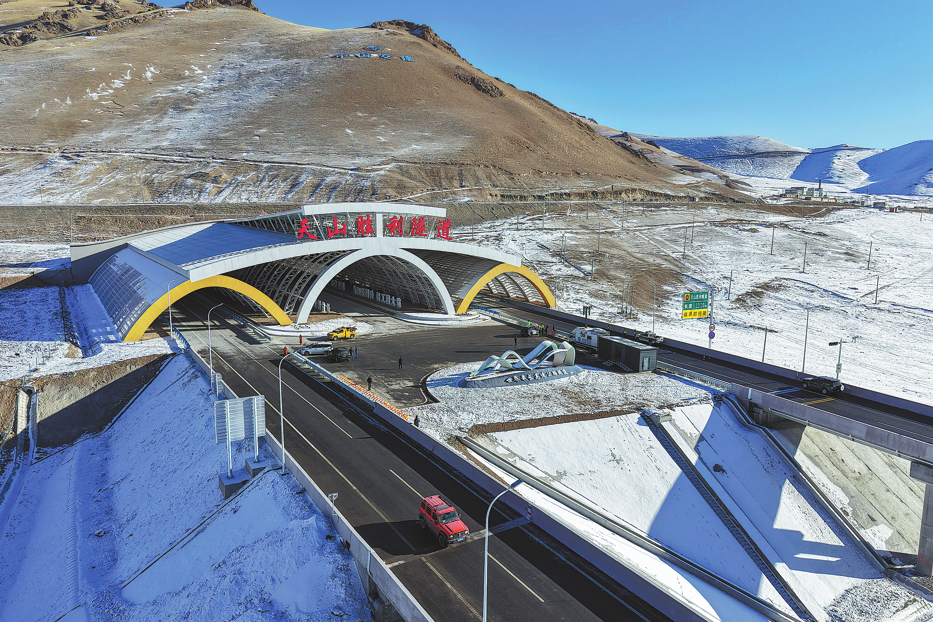An epitome of robust Sino-African economic relations

Editor's note: This article is part of the Preview Policy Report for the 2018 Beijing Summit of the Forum on China-Africa Cooperation, to be published by China Watch, China Daily's think tank.
Angola is a country that is in the southern part of the African continent, sharing borders, to the north with the Democratic Republic of Congo, to the east with the Republic of Zambia and to the south with Namibia. The country gained independence from Portugal on Nov 11, 1975, after 500 years of colonial rule.
After independence, unfortunately, the country plunged into a civil war that caused most of economic activity to stop. The only sectors that did not stop producing were diamonds and petroleum, because they were the ones that sustained the financing of the war between the two movements.
In 2002 the country finally reached peace with the end of the civil war that had lasted 27 years, which made it possible to re-launch economic activity. But it was necessary to rebuild the economic and social infrastructure (including roads, bridges, hospitals, railways, airports, ports and dams), which were destroyed during the period of the armed conflict.
Such reconstruction required an enormous amount of financial resources, which the country did not have at the time. The government contacted the Paris Club to finance the reconstruction, but the contacts did not work. It was then that they turned to China that readily, and without any prerequisites agreed to finance the national reconstruction project.
With the support of China, Angola has been able to rebuild much of the infrastructure from roads, bridges, railways, airports, hospitals, schools, housing projects, etc. From 2002 to 2017, the Angolan government has spent about $112 billion on the reconstruction and construction of various infrastructure throughout the country.
Other countries, such as Portugal and Brazil, have also been providing credit lines to finance some infrastructure construction projects in the country. But China is by far the largest creditor in terms of funding for national reconstruction.
The reconstruction of the main economic and social infrastructures in Angola and in most of African countries are being done by Chinese companies with loans from China. The Chinese companies create temporary employment in the construction sector in the areas where the works are performed. One thing that is criticized by the locals is the quality of the work, because some buildings and roads that are being constructed do not last long. But people know that the main responsibility to ensure the good quality of the work is the owner of the project that, in most of cases, is the government.
Since 2007, China has been Angola's main trading partner with respect to exports. Before this year, the United States (with an average of 40 percent) led the set of countries where Angolan oil was sold most. In 2016 out of $25.5 billion of total oil exports, 54 percent of Angola's oil exports went to China and only 5 percent to the US and 3 percent to Portugal. In 2017, out of $31 billion of total oil exports, Angola exported 62 percent of its oil to China, 3 percent to the US and 4 percent to South Africa, according to data from the Central Bank of Angola.
Regarding imports, the main economic partner is, of course, due to historical ties, Portugal, accounting for 14 percent of total Angolan imports in 2016. China ranks second with 13 percent of the total value of imports of goods. In 2016 the total imports of the country was about $25 billion and in 2017 $28 billion.
Angola's trade with China has a greater potential to increase with this year's signing of the visa facilitation agreement on ordinary passports between the two countries. Thus economic agents of both countries can travel for business, tourism, education, health, etc. without the lengthy process of obtaining visas.
Angola needs support to diversify its economy and exports taking into account that more than 95 percent of Angola exports is oil and about 3 percent diamonds. This requires more direct foreign investment for the non-oil sector and sufficient non-oil production not only to meet domestic demand but also to be exported. The most exported non-oil products are wood, coffee (which in the colonial period was the largest export product, now weighs less than 0.5 percent of total exports), marble, granite, fish, cement and beverages. As Angola’s main foreign creditor, Chinese investors are welcome to invest in the non-oil sector in the country. In the years to come the non-oil sector is projected to grow more than the oil sector.
Francisco Miguel Paulo is researcher and auxiliary professor at The Catholic University of Angola (CEIC-UCAN). The author contributed this article to China Watch exclusively. The views expressed do not necessarily reflect those of China Watch.
All rights reserved. Copying or sharing of any content for other than personal use is prohibited without prior written permission.


































